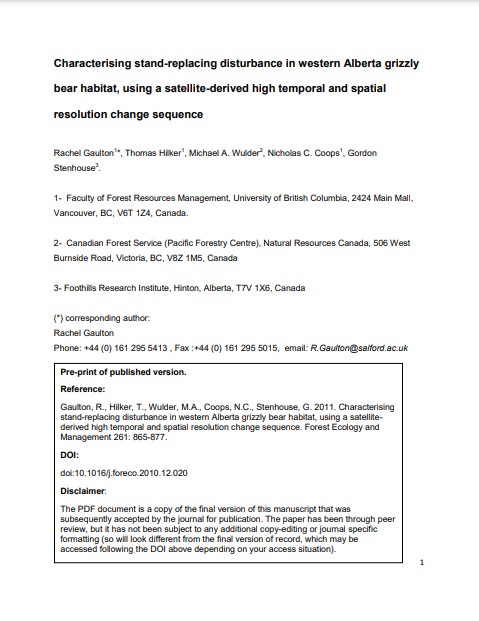Characterizing stand-replacing disturbance in western Alberta grizzly bear habitat, using a satellite-derived high temporal and spatial resolution change sequence
Bosque Modelo:
Foothills
Temática:
Gestión forestal
Tipo de documento:
Artículo científico
Resumen
Timely and accurate mapping of anthropogenic and natural disturbance patterns can be used to better understand the nature of wildlife habitats, distributions, and movements. One common approach to map forest disturbance is by using high spatial resolution satellite imagery, such as Landsat 5 Thematic Mapper (TM) or Landsat 7 Enhanced Thematic Mapper plus (ETM+) imagery acquired at a 30 m spatial resolution. However, the low revisit times of these sensors acts to limit the capability to accurately determine dates for a sequence of disturbance events, especially in regions where cloud contamination is a frequent occurrence. As wildlife habitat use can vary significantly seasonally, annual patterns of disturbance are often insufficient in assessing relationships between disturbance and foraging behaviour or movement patterns.
Información Bibliográfica
Autor:
Gaulton, R., Hilker, T., Wulder, M.A., Coops, N.C., & Stenhouse, G.
Revista:
Forest Ecology and Management
Año:
2011
N°:
-
País :
Canadá
Páginas:
865 - 877
Volumen:
261
Idioma:
Ingles
Palabras claves
Ursus arctos L., Landsat, MODIS, change detection, harvesting, monitoring





